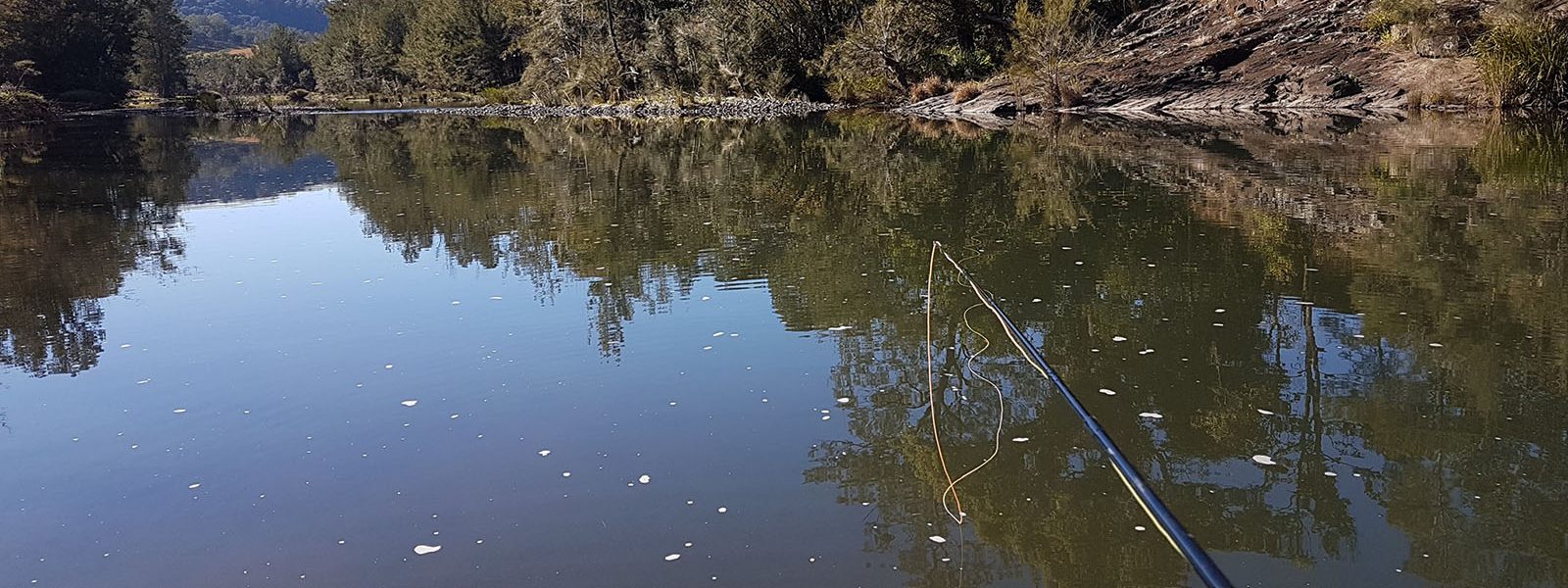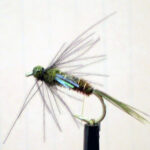
Materials
- Hook: Size 14 2X Nymph Hook
- Thread: Black 14/0
- Bead: Tungsten Mottled Olive 5/64 (any dark color Ok)
- Tail: Olive Green Dyed Pheasant Tail Fibers. (Any dark PT Ok)
- Body: Olive Green Dyed Pheasant Tail (same)
- Rib: Extra Small Copper Wire
- Wings: 4 strands of Semco Fringe Shimmer White (Spotlight) or single stand of flash
- Thorax: Reddish Brown, Olive Brown or Chocolate Brown Hares Ear (any dark OK)
- Hackle: Black CDC Feather.
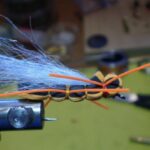
This is a combination hopper, Chernobyl ant and cicada in black and orange foam. I tied it in the morning for the first time. Toss it, flop it down, let is set and water movement is enough.
Materials
- Thread – Orange 6/0 thread for the body and red nylon stretch overlocking thread for the head.
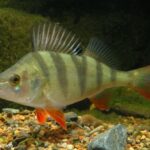
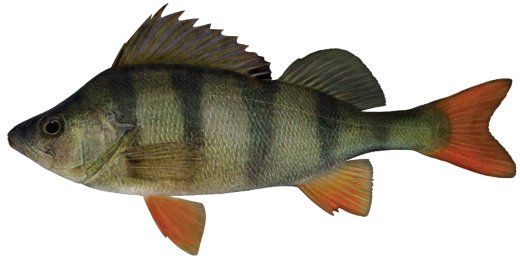
Redfin perch (Perca fluviatilis), also known as English perch, is a medium sized freshwater fish native to northern Europe. First introduced to Tasmania in 1862 (two years before the first trout) for angling, only eleven fish survived the arduous journey by sailing vessel and were released into Tasmanian waters. Read More »
Materials
- Thread: Red 14/0
- Hook: Scud size 10
- Bead: Silver 7/64
- Lead free wire – 4 turns .015, 4 turns
- Rib: very small silver wire
- Tail: Brown make up brush fibers
- Body: Natural or Olive Hair’s ear dubbing

Tying Steps
- Silver bead and four turns of the lead free wire, should fit into the bead.

A foam derivative of the Turck’s Tarantula, the Stealth Bomber is a foam diver/slider designed to duplicate the Tarantula’s diving motion and the resulting bubble trail made when the fly is stripped hard.
The rear tab of foam and the air space below it captures air, which bubbles on the dive. Read More »
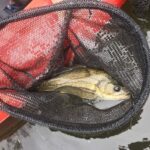

This month saw nine of our members check out the venue for November’s outing. Check out the photos and you’ll understand why we are all excited about returning to Shute Hill. Paul, our resident fly tying expert, found the only fly that was successful for the local herring and Dawn, Ron and Ken had success on some good bass. Read More »
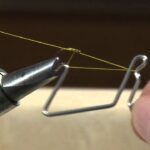
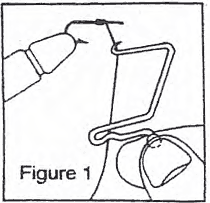
- Hold the Whip Finish Tool in your hand trapping the ball located just above the handle between thumb and index finger. (This prevents the tool from turning.) While holding the tool in this manner, position the head of the tool on tying thread as shown in Figure 1.
